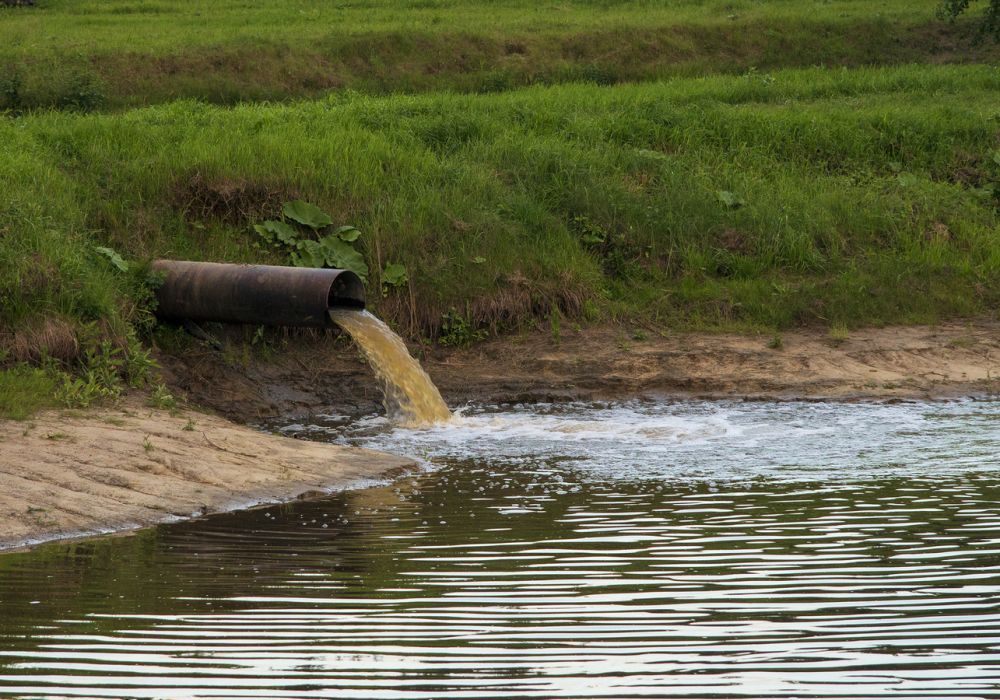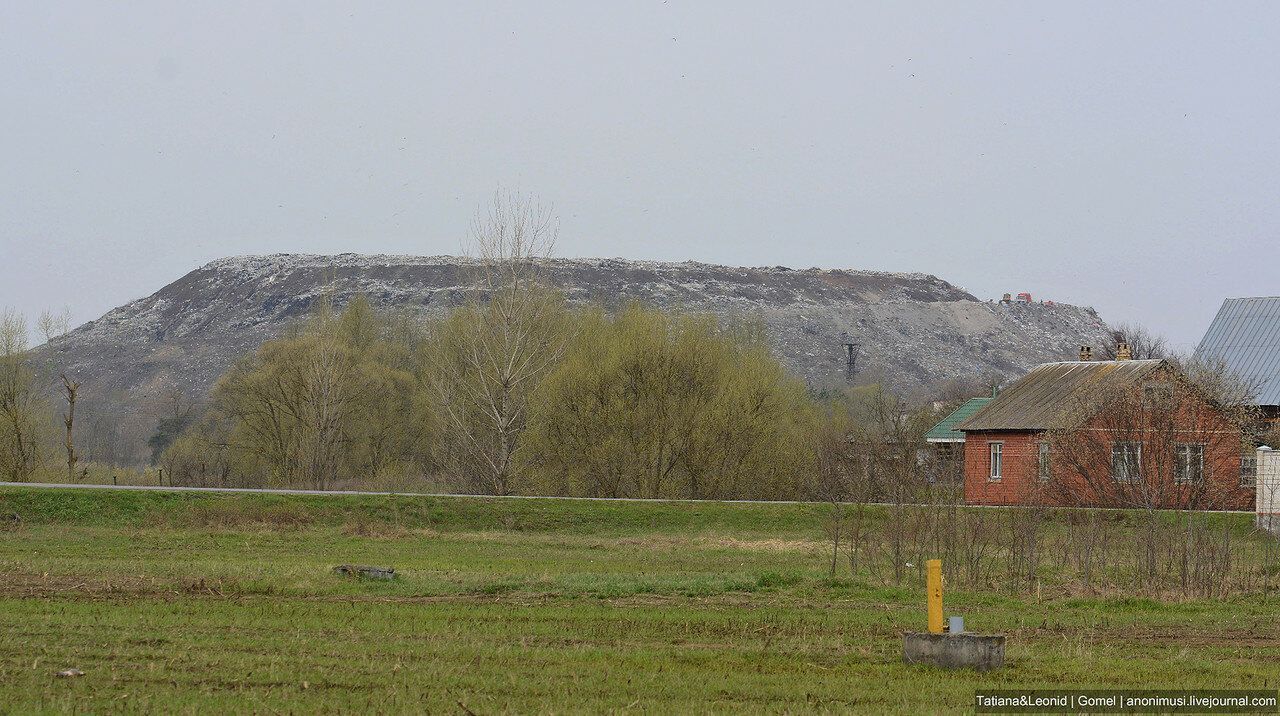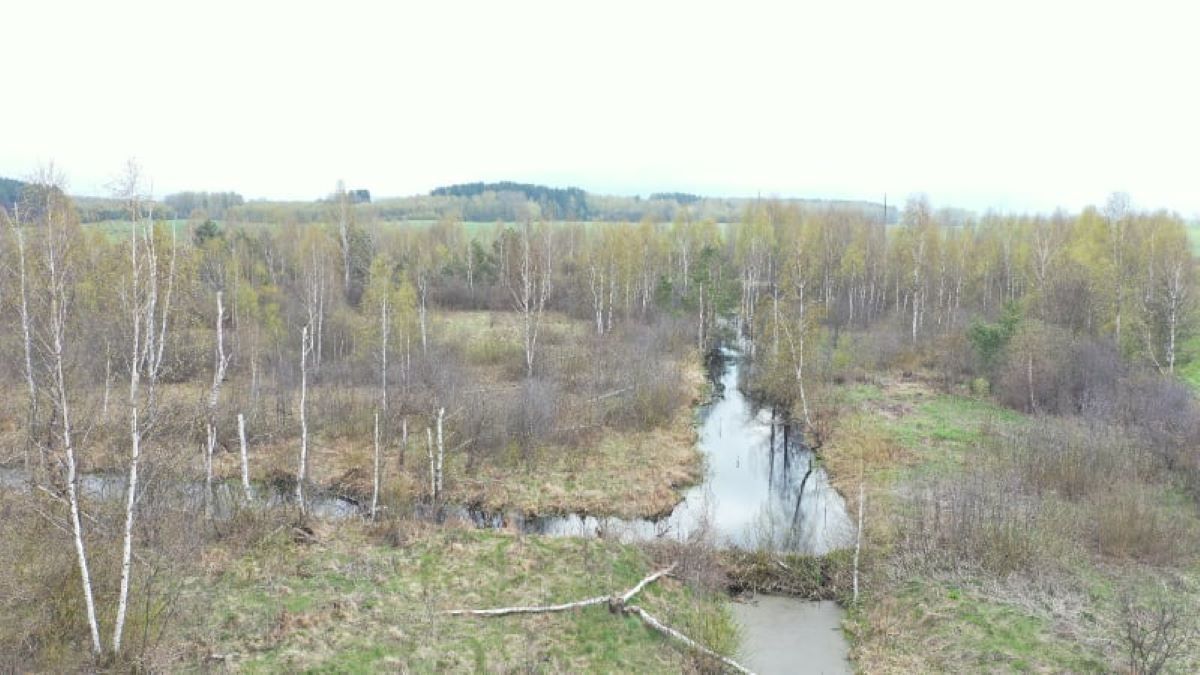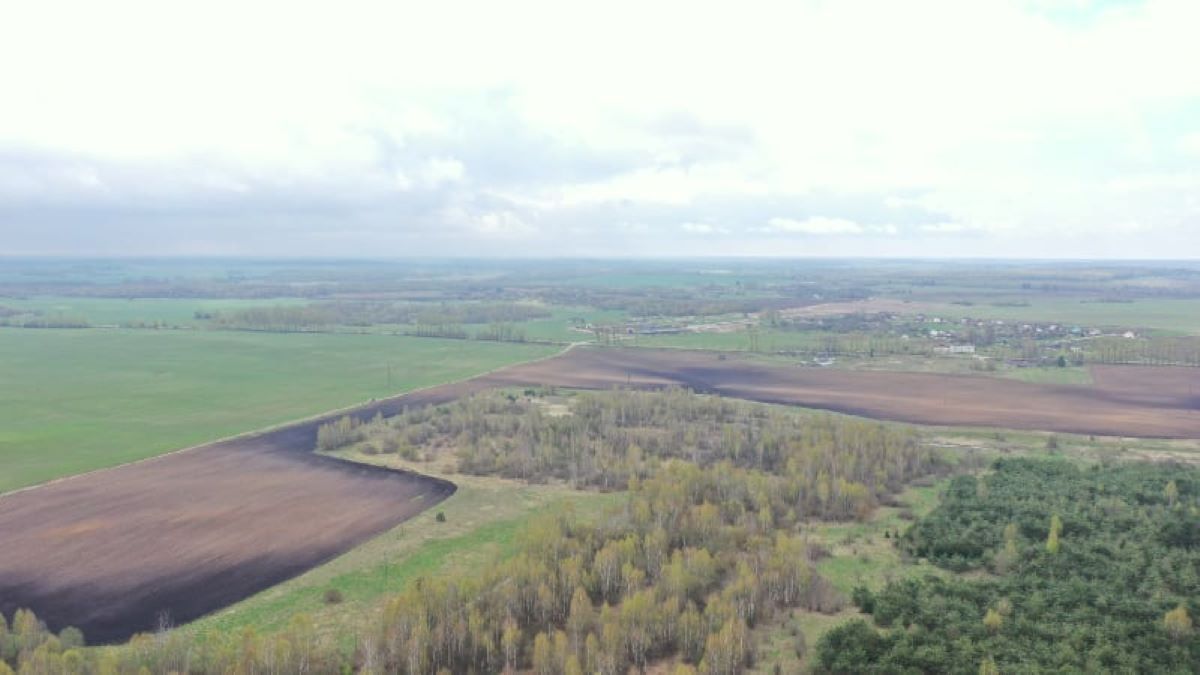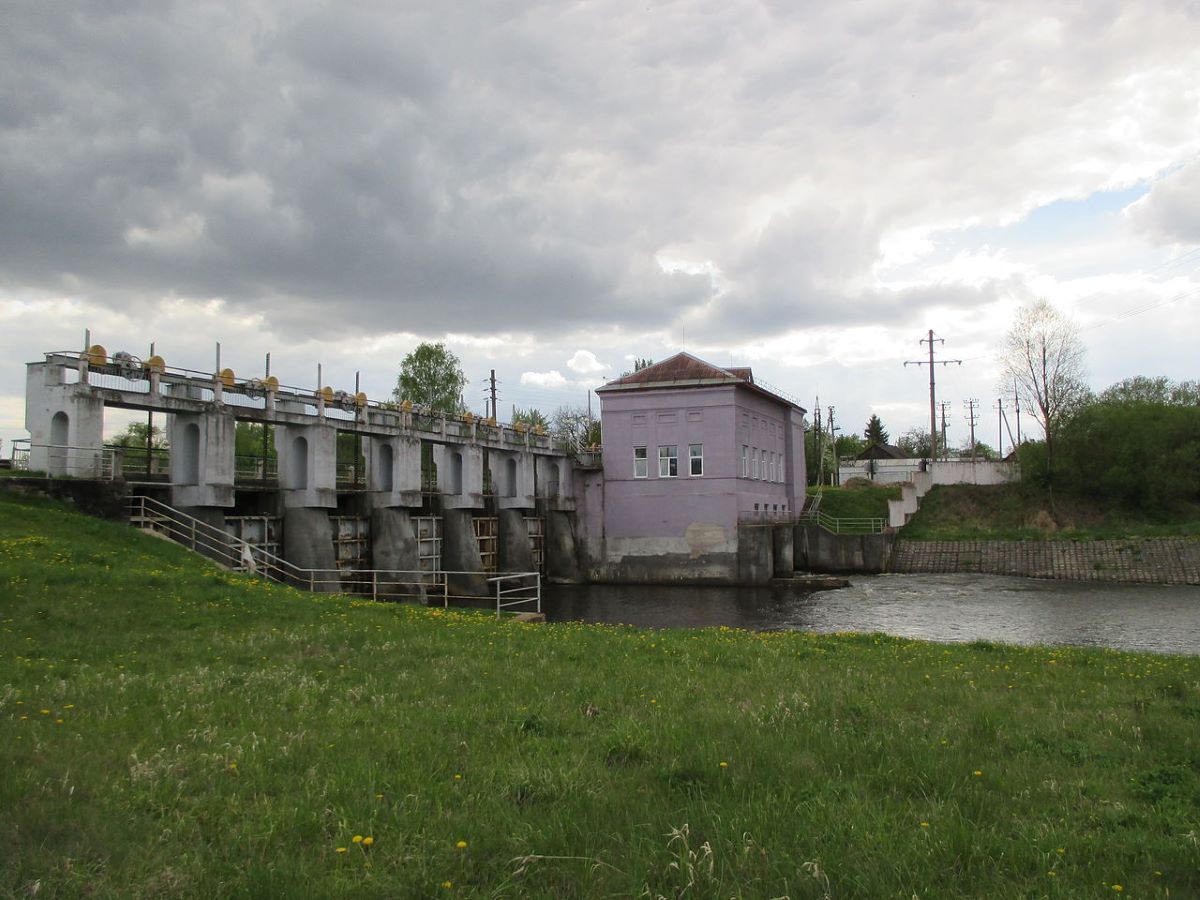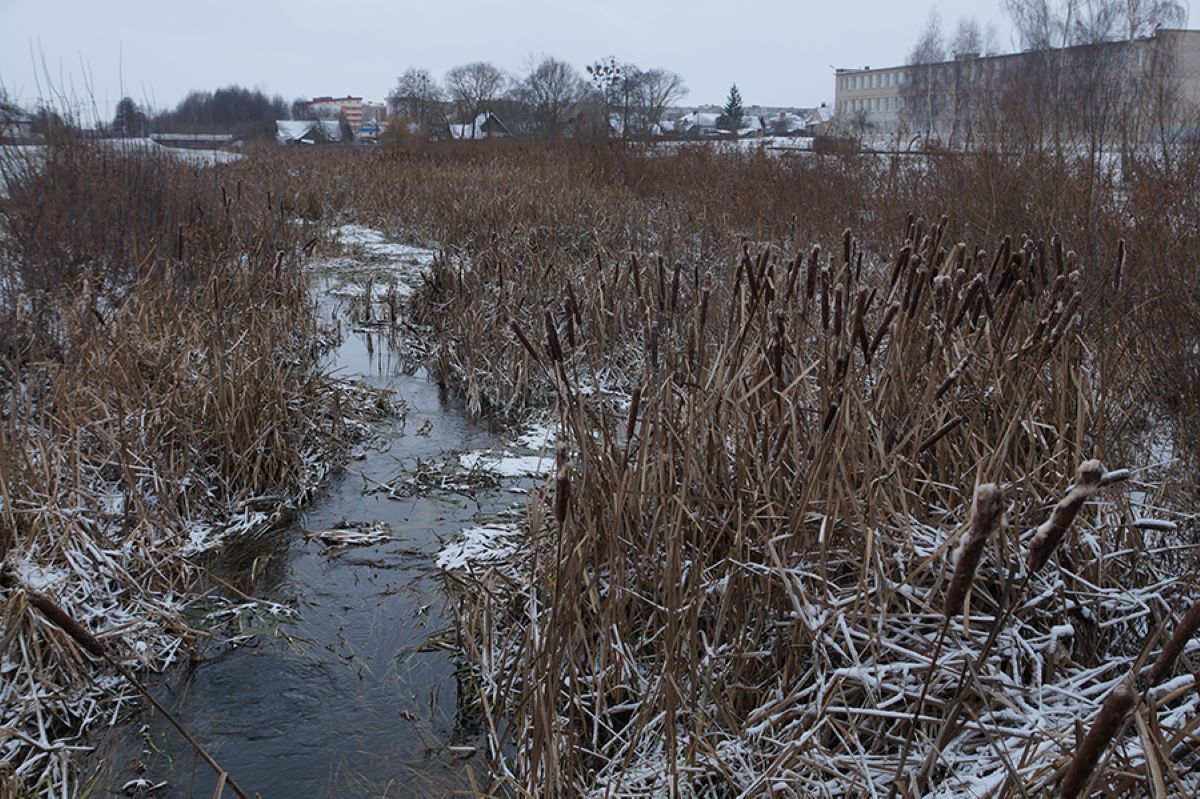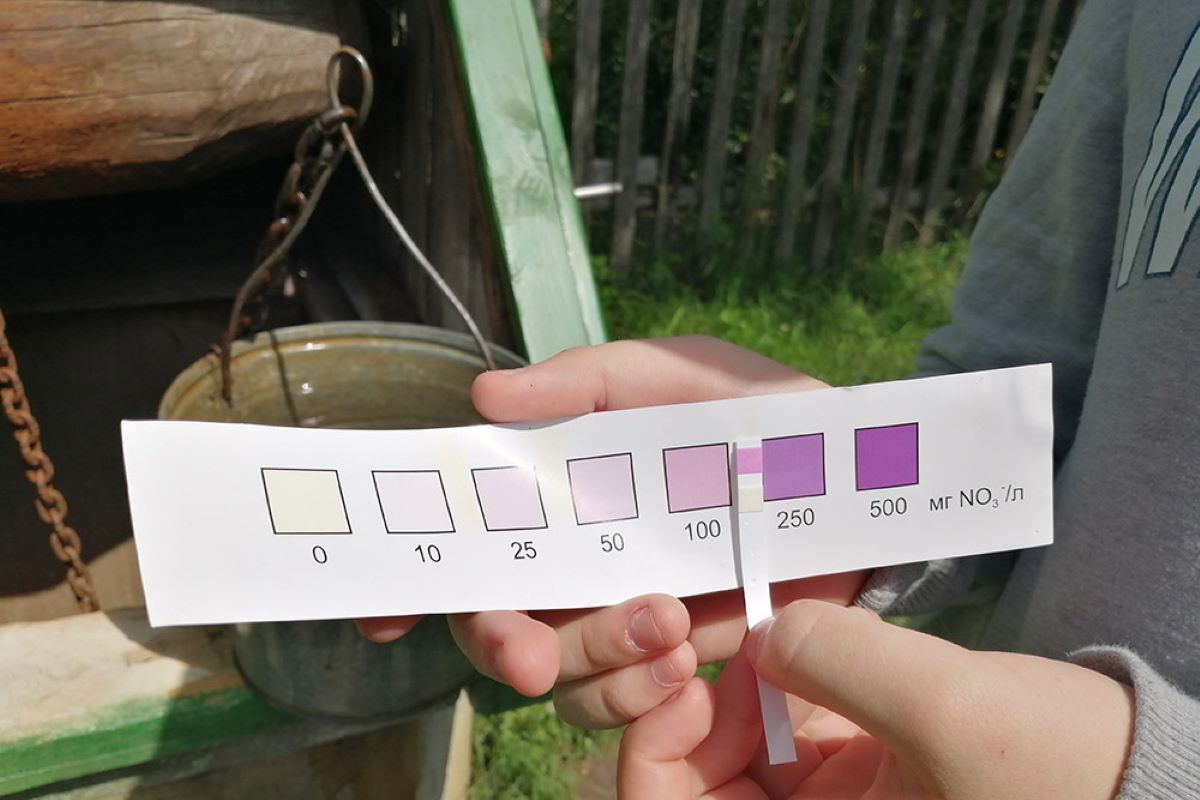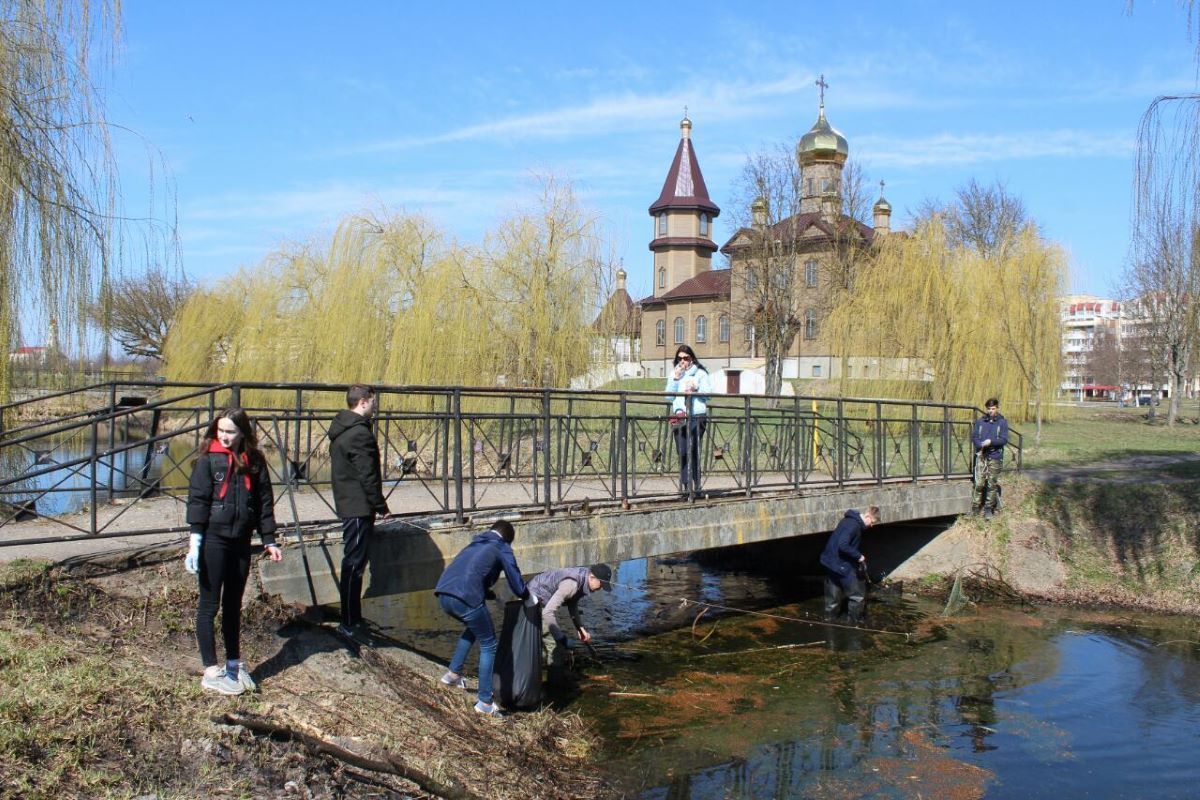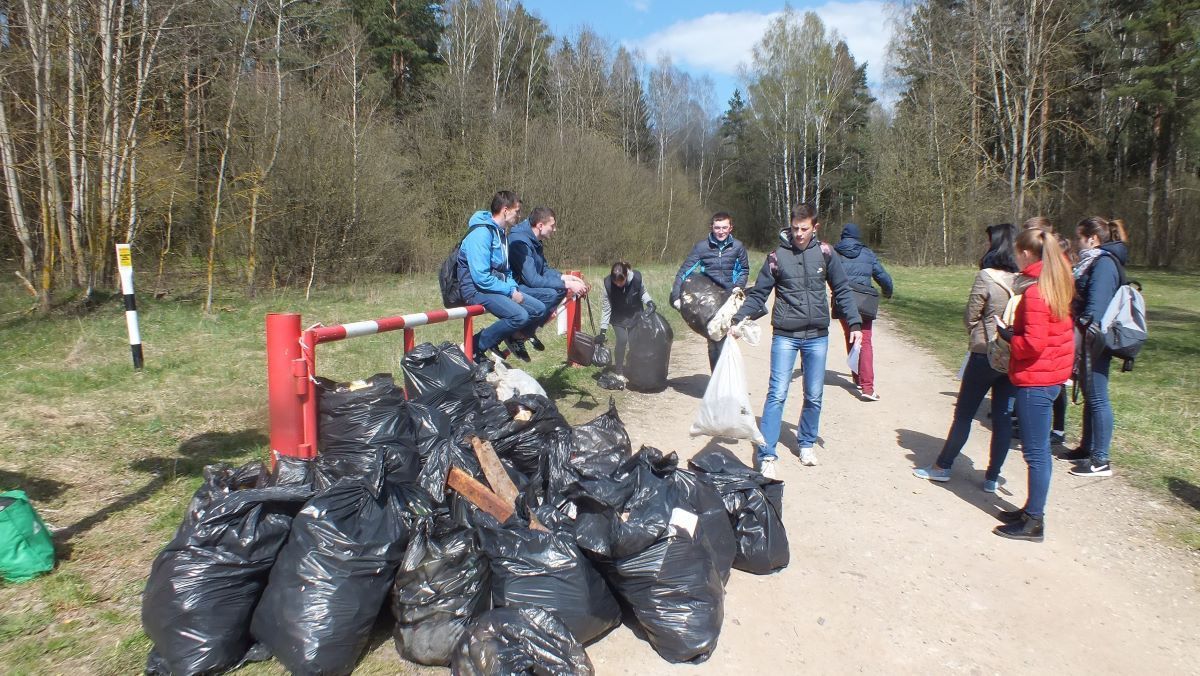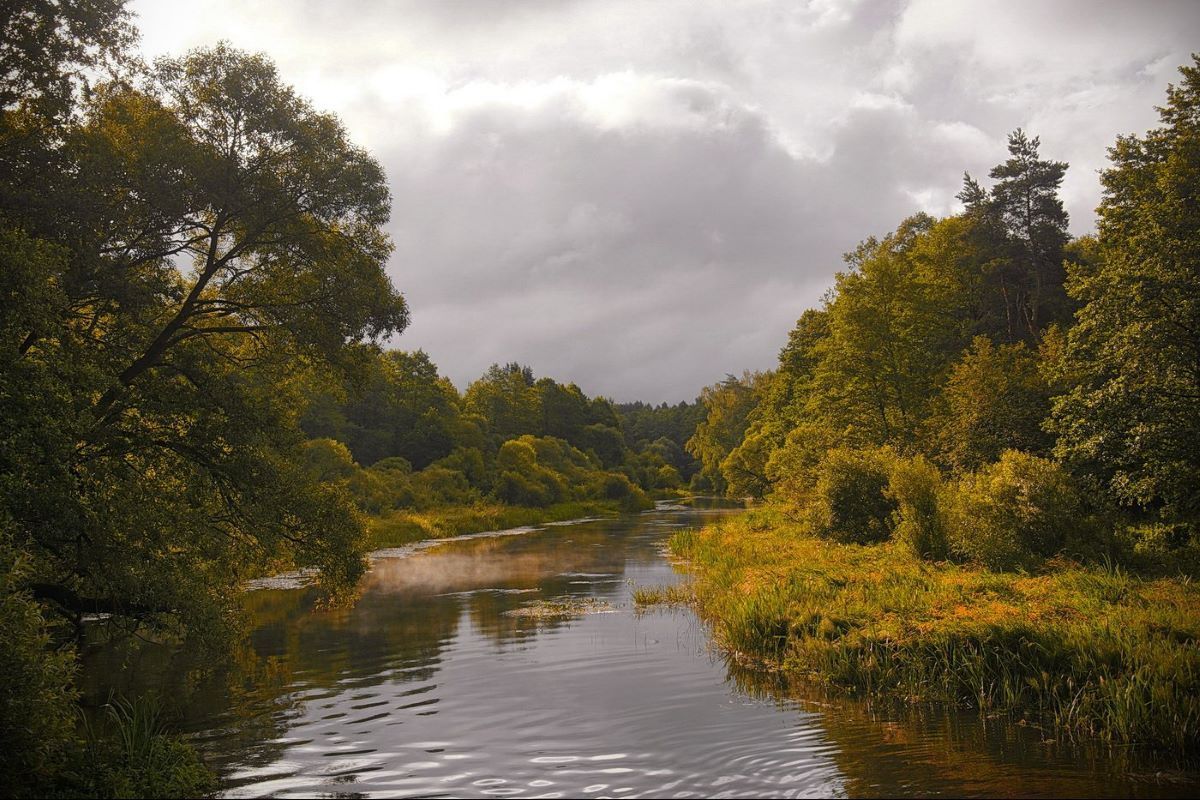The situation with small rivers in Belarus? Part Two
- Topic: Rivers and lakes
- Authors: Bahna
- Date: 21.01.2022, 14:00
Livestock breeding complexes and agricultural activities are the main, however not the only threats to small rivers in Belarus. We began to analyse the problems of our watercourses in the first part of the article. We would like to touch upon the impact of global climate change, medicines, nitrates, as well as ways to change the situation.
Five major threats
Experts single out livestock breeding complexes and agriculture among the most relevant risks for small Belarusian rivers. Manure effluents from the livestock breeding farms regularly enter surface water sources. The use of mineral and organic fertilisers in the cultivation of agricultural plants leads to the carry-over of nutrients — nitrogen and phosphorus – into small rivers.
As a result, eutrophication processes occur. And this is atypical since rivers usually have a high biological interchange of substances. But due to the decrease in the volume and movement of water, macrophyte plants, algae, protophytes grow, and the general condition of the river deteriorates. The smaller the watercourse, the worse the situation.
Back in 2018, experts recorded the deterioration of the hydrochemical and hydrobiological condition of such rivers as the Uza (5 km southwest of Gomel) and the Svisloch (near the settlement of Korolischevichi).
“In our region, these rivers belong to the Schara basin. Even in the summer, there is a decrease in the volume of dissolved oxygen in the water. We recorded a similar situation in the heads of the Schara in the Lyakhovichi and Baranovichi districts, on the Myshanka River in the Baranovichi district in the summer. The reason is precisely the decrease in effluents and the afflux of biogenes,” says Vladimir Zuev, chairman of the environmental and local history public association Nerush, deputy of the Baranovichi City Council of Deputies.
The poor condition of rivers sources is the third problem that he mentions. Those rivers that are fed from temporary perched water, have a spasmodic flow of water within one year or even a season. As a result of the impact of all factors, the sources decline, and even less water gets into the rivers.
The fourth problem is the consequences of land reclamation. Rivers whose basin was drained and reclamation canals were laid suffer the most. The basin of some watercourses is already a land-reclamation system itself.
“This year we were looking for the sources of the Molchad River,” Vladimir Zuev notes. “We looked at the old maps of a hundred and fifty years ago and compared the situation with today. In fact, now the Molchad generally begins with a reclamation canal. The same is observed for many other rivers of Belarus, and this is alarming. Problems with the state of land reclamation networks and their impact on rivers are also aggravated by a radical decrease in the number of specialists in agricultural farms, and sometimes by ignoring the need for regular implementation of certain technical measures in this area. On many sluices, even from the outside, it is noticeable that the regulators are covered with rust. It is clear that they have not been used for years or decades!”
Unused dams are another pain.
Many of them are preventing fish from passing, and as a result, the river is “broken” into several areas that are not interconnected.
They are often not serviced or even used. This is true about old dams, former mills or small hydropower plants. As a result of monitoring, environmentalists of the Nerush association found as many as five such facilities in the Baranovichi district in the basin of the Svorotva alone. This river is known for its population of brook trout that is extremely harmed by these obstacles.
Global climate change: Belarus is not lagging behind
Global climate change is becoming more and more impactful for the nature of Belarus. The country’s rivers and reservoirs are experiencing a lack of precipitation, winters are becoming increasingly dry, periods of extreme heat and even drought have become frequent in summer. The nature of rains is also changing: short-term thunderstorms occur more and more often, when a record amount of precipitation falls in a matter of hours. Such a sharp drop in the afflux of water into the soil does not contribute to its retention and replenishment of the country’s water resources.
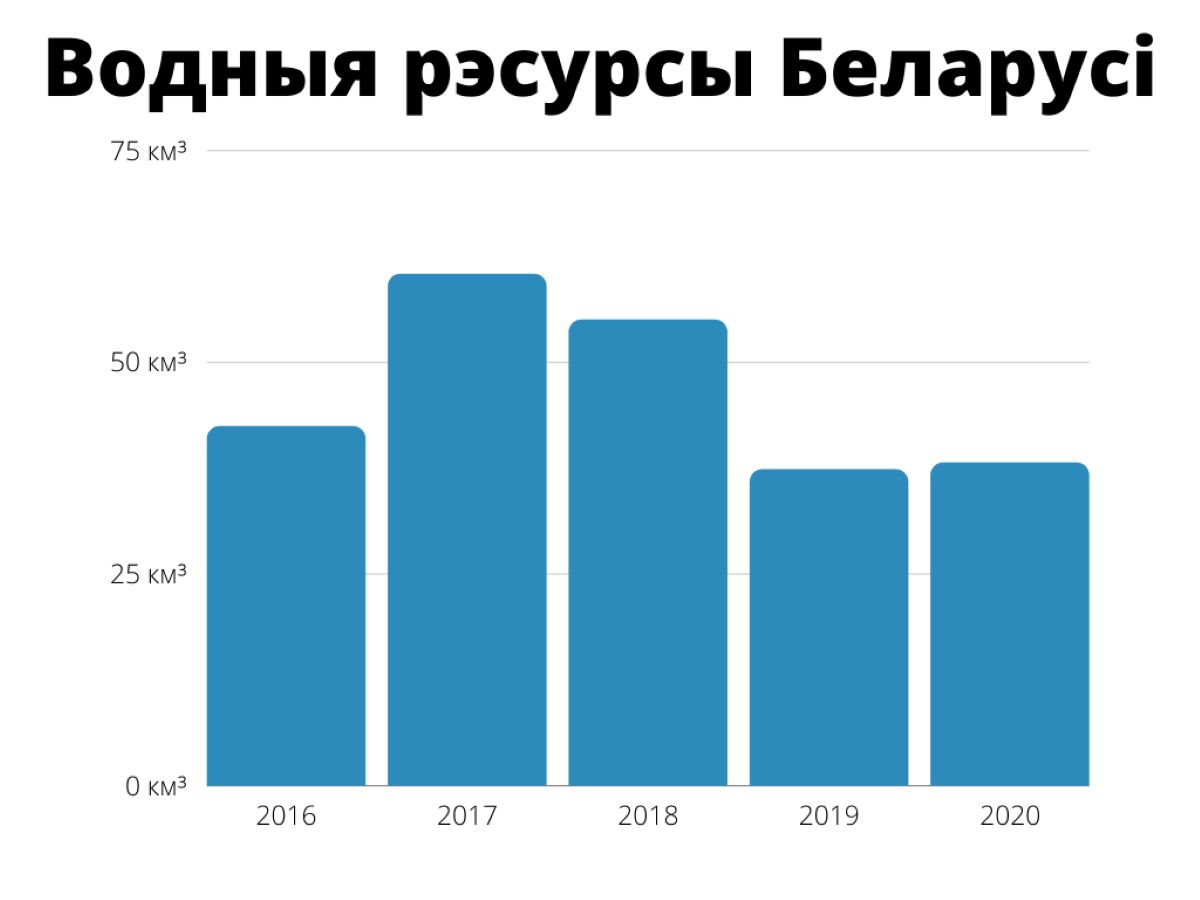
As a result, climate change is not the main reason for the drying up of small rivers in the country. They serve as a certain driver of the deterioration of the situation, when one negative effect is multiplied and accelerated by another. At the same time, experts believe that if the situation with water resources in Belarus had not worsened in the 20th century, even high temperatures caused by climate change would have been accompanied by an increase in humidity. Droughts could be avoided, and the duration of precipitation would increase. This would create an additional incentive for the development of agriculture.
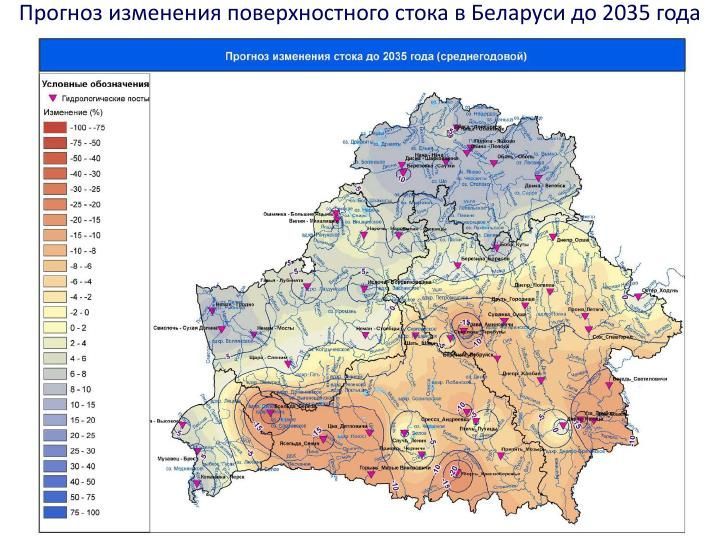
Environmental monitoring for children and more
To teach children and young people the basics of monitoring the state of rivers and their prudent treatment, specialists have developed a special educational programme “River Monitoring”. It includes a set of various educational materials, approaches, explains the methodology of monitoring watercourses and gives quite some knowledge about environmental monitoring. The programme has already been approved for out-of-school classes in the Vitebsk and Grodno regions, and since 2020 it has been implemented in Minsk. At least 30-40 schools are already using the methodological and pedagogical toolkit of the programme.
“It differs from the school course because there we usually study watercourses from a geographical point of view. And in our programme, we focus on the importance of small rivers and the need to save them, because any large river consists of several small ones. All the pollution from small rivers will sooner or later get into large ones, so they need to be taken care of additionally,” says Natalia Porechina, a specialist in sustainable water resources management, head of the River Monitoring programme.
A lot of attention in the programme is also paid to the study of anthropogenic impact on water resources. It is easier for children to study the state of water bodies in their neighbourhoods with the help of specific observation methods.
At the same time, anyone can use the expertise — the methods are available to schoolchildren as well as to adults. The creators of the programme also conduct educational seminars, lectures, so those who want to learn more about the state of rivers in their area and learn how to study and protect them should be proactive.
Water transfers nitrates, phosphates and harmful drugs
Back in school, we studied the hydrological cycle. This means that the pollution of rivers and lakes, as well as groundwater, will sooner or later lead to a deterioration of the state of water in wells or springs.
In the River Monitoring programme, a separate section is devoted to the topic of nitrates in drinking water. In recent decades, this has become a big problem: nitrates fall from livestock breeding complexes into rivers if the rules for processing manure are disregarded there, or with rain or snow-melt in the spring from agricultural fields.
As a result of public monitoring, it was found that about 70% of all wells in Belarus have an increased concentration of nitrates. And this is a direct danger to human health.
It is believed that the water in the wells is crystal clear and tasty. But the problem with nitrates is that you can’t identify them by sediment, taste or smell. It is possible to see their concentration only with the help of special analyses.
Previously, small agricultural enterprises had the opportunity to evenly distribute the available manure on their territories or sell it to the local population. But now large livestock breeding complexes for 100 thousand pigs or several thousand cows are being built in the country. The formed manure cannot be completely distributed and even sold: it is unprofitable to transport it since the price of fuel will exceed the income from the sale.
As a result, harmful substances enter the rivers, and blue-green algae begin to grow actively, the water bodies become overgrown, as the natural mechanisms of their self-purification are disturbed.
Manure is not the only cause of the eutrophication of reservoirs. Another substance — phosphates — strongly affect the amount of harmful blue-green algae. How do they end up in the water? The source is simple: they are added to detergents to reduce water hardness.
The use of phosphates in detergents has been banned in the European Union since 2012, but there is no ban in Belarus. The main rule is that their concentration should not exceed 17%.
As a result, phosphates from detergents fall into wastewater, and then into sewage treatment plants. There are no technical opportunities to isolate phosphates from water, separate and neutralise them at domestic enterprises yet.
Substances from medical preparations have become another source of water pollution in our rivers and reservoirs. After their use, they enter the sewer through physical excrement. Many components of medicines negatively affect both the condition of the water and its inhabitants. For example, hormonal drugs and their residues negatively affect fish. Since 1 September 2020, the Ministry of Housing and Communal Services has issued a technical code, according to which drug waste has a third hazard class. Special containers for their disposal were installed at 20 polyclinics of the capital. In other cities of the country, 18 more have been installed, but rather exclusively through the efforts of activists.
Will trees save our rivers?
One of the measures to improve the condition of small rivers in Belarus could be the restoration of vegetation in their floodplains.
“I am convinced that it is necessary to adopt a programme to expand the forest strip along such rivers,” says Aleksander Doroshevich, coordinator of the Green Watch initiative in the Ostrovets district. “It is necessary to allocate about 50 meters on the banks of a watercourse if it passes through agricultural zones, and plant trees and other types of vegetation there.”
However, among experts, views on such a measure vary.
“The fact is that as a result of a decrease in the flow speed, organic matter accumulates, and shrubs come to replace aquatic macrophytes — for example, willow or alder,” notes Vladimir Zuev. “Their roots further slow down the speed of the current. And as a result, even more organic matter will accumulate, which the river is not able to process. This leads to its speedy death.”
What the eye does not see, the heart does not grieve over
Garbage dumps also affect the condition of small rivers. Some waste collection sites are formed spontaneously, others become places of regular pollution. This situation is especially relevant for rural areas, and not just because of the lack of conscientiousness among residents, but also because of the lack of a systematic approach to sorting garbage in villages. Usually, many of the villagers simply take the accumulated garbage far away and leave it there. Experts believe that the introduction of a waste sorting system in rural areas will help to clean the banks of our rivers and the water in them.
It is also necessary to regularly monitor and equip recreational areas with garbage collection points in the summer. This is especially true for “wild” beaches and river banks. But the environmentally-conscious residents of the country should also be vigilant. Experts recalled cases when local authorities would dig out a pit for garbage in recreation sites, and instead of taking it away, the pit would be filled up and a new one would be made.
Who is responsible for the changes?
As you know, the more controlled is our influence on nature, the fewer negative consequences we get. But the choice of this or that measure should be based on a qualitative analysis and monitoring of the current situation. Its results should be available to the public and the expert community.
Experts note that the adoption of a new Strategy for Water Resources Management in the Context of Climate Change 2030 does not guarantee the qualitative implementation of the set goals locally. According to Igor Kutalovsky, a specialist in the field of landscape and biological diversity, it is necessary to develop local programmes to address water resources issues. Ideally, each agricultural enterprise should deal with this separately. It is necessary to significantly improve the efficiency of wastewater purification, as well as to control the discharge of nutrients from the fields. The latter goal can be achieved by limiting the use of fertilisers or by creating effective zones that “catch” pollution draining from the catchment area.
“I believe that the dissociation of various agencies and the lack of regular interaction between them is an obstacle in the water policy of Belarus. As a result, many programmes are not aligned with each other. For example, on the one hand, we are implementing programmes for the renaturalisation of swamps, and on the other hand, for the restoration of previously drained land reclamation networks,” Vladimir Zuev notes.
“Thus, in the Baranovichi district a couple of years ago they invested a lot of money to restore the land reclamation network near the village of Molchad on the river of the same name. Despite the objections of residents, the planned activities were carried out, but in the end, the money was simply “buried” in the ground. Observation of the reconstructed reclamation networks has shown that there is no active agricultural activity there now,” he adds.
No interference, no indifference
Large projects to preserve and save small rivers in Belarus require state efforts. But representatives of civil society ask for one thing: do not interfere. The persecution of activists and the liquidation of environmental NGOs jeopardise the implementation of many projects that are capable of solving many issues without the participation of the state. The expert potential to assess the situation on the rivers of Belarus and in other areas of environmental protection drops significantly because of this.
A lot depends on citizens, and the call of experts is the same: do not be indifferent or silent! Everyone can become a local public and environmental activist and identify sources of pollution of rivers: identify emergency situations at agricultural enterprises, record run-off from roads where salt mixtures are actively used, and much more. Local inspections of natural resources and the environment should be immediately notified of the appearance of garbage dumps. This is important for government agencies because after optimising personnel, they sometimes do not have enough strength to regularly monitor the situation. It is necessary to inform environmental activists and NGOs about the identified problems, attract media attention and spread information through social media.
“If you continue to pretend this does not concern you, then changes will not come soon. The current legislation is not perfect, but there are opportunities to put pressure on violators in it. If the regional authorities see that residents do not care, then they boldly violate the law,” adds Aleksander Doroshevich.
She the first part of the article.
Featured photo — 2questions.be
Bahna materials may only be reprinted with the written permission of the editorial board.
